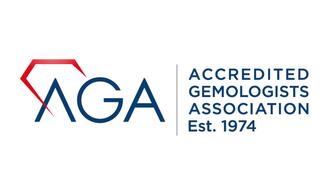In its annual report, Pinterest noted an increase in searches for brooches, heirloom jewelry, and ‘80s luxury.
5 Things to Know about the Paycheck Protection Program Update
Updates to PPP include more time to use the funds and a change to how much of the loan can be used for non-payroll expenses.

New York—Congress passed the Paycheck Protection Program Flexibility Act last week with the goal of addressing the problems that have plagued the program’s rocky rollout.
Signed into law as part of the Coronavirus Aid, Relief, and Economic Security (CARES) Act, PPP grappled with administrative and technical issues as applications from small businesses poured in, eventually running out of money before being replenished in late April.
President Donald Trump signed the program update into law Friday after the bipartisan bill received unanimous consent in the Senate and passed 417-1 in the U.S. House of Representatives with Rep. Thomas Massie (R-Ky.) as the only dissenting vote.
Here are the five major updates to the bill:
The loan coverage period has been extended.
The coverage period has been extended from June 30 to Dec. 31.
“This bill will provide businesses with more time and flexibility to keep their employees on the payroll and ensure their continued operations as we safely reopen our country,” said the Small Business Administration’s Jovita Carranza and U.S. Treasury Secretary Steven Mnuchin in a joint statement Monday following the bill’s passage.
June 30 is still the deadline to apply to receive a PPP loan.
“If you’re interested, there’s still time to get a loan,” said Benjamin Ross, an associate at law firm Fisher Phillips, during a webinar hosted by Jewelers of America on the PPP update Thursday. “There is still money available.”
More than $130 billion was left in the fund as of Tuesday, according to a New York Times report, due in part to confusion surrounding how to use the money.
Phillip Bosen of Bosen Associates, a consultancy firm for retail jewelers, said PPP has been a “hot topic with most of my clients,” in an email to National Jeweler.
Bosen, who got his start at his family’s jewelry store at the age of 12, works with retail jewelers of all sizes.
While some jewelers have not applied, said Bosen, many who did received the first round of funding.
“Generally, they are grateful for the PPP and for the relatively quick response from the banks,” he said.
Retailers have more time to distribute the funds.
Loan forgiveness has been expanded as part of the update.
Instead of the initial eight weeks, recipients now have 24 weeks or until Dec. 31, whichever is earlier, to allocate the money.
Previous time constraints have posed a problem for retailers, especially restaurants,
Recipients who got a loan before the update passed have the option to stick to the original eight-week loan period.
If you spent all or almost all of your money before the update, you may want to stick to the eight weeks, said Ross.
“If there’s a chance you might have to lay employees off before the end of the year, your best choice is to get your [loan] forgiven before there’s a layoff,” he added, noting that the layoff will affect the full-time employee count, which may impact the reduction you receive when applying for forgiveness.
More of the money can be used for non-payroll expenses.
To receive loan forgiveness, recipients have to use at least 60 percent of the loan for payroll costs, lower than the previous 75 percent requirement.
This change allows 40 percent to be used for non-payroll expenses, an increase from the previous limitation of 25 percent.
The previous limitation was a source of concern in particular for retailers in major cities struggling with high rent prices.
Rent is considered a non-payroll expense, as is interest on mortgages, but the loan may not be applied to the principal.
Leases are also covered, said Ross, which can mean vehicle, equipment, and storage unit leases.
Utilities are considered a non-payroll expense, including basics, like water, heat, and electricity, as well as internet, cell phones, trash hauling and security alarms.
Partial loan forgiveness is now alsoan option for borrowers who, during the covered period, used less than 60 percent of the loan for payroll so long as 60 percent of the amount eventually forgiven does go to payroll.
According to an example given by the SBA: "If a borrower receives a $100,000 PPP loan, and during the covered period the borrower spends $54,000 (or 54 percent) of its loan on payroll costs, then because the borrower used less than 60 percent of its loan on payroll costs, the maximum amount of loan forgiveness the borrower may receive is $90,000."
There is more time to pay back the loan.
If for any reason a PPP loan is not forgiven, borrowers have to repay that to the lender.
The update gives recipients more time to do that, with exceptions, extending the maturity date on loan amounts after the forgiveness period to a minimum of five years rather than the previous two-year period.
As for the exceptions, note that for loans made on or after June 5, the repayment term is a minimum of five years and a maximum of 10 years.
For loans made prior to June 5, the two-year term is the default but borrowers can contact lenders to agree upon a longer term.
In an update Wednesday, the SBA and the U.S. Treasury noted it expects five years will be sufficient, adding “the considerable economic disruption caused by the coronavirus is expected to abate well before the five-year maturity date.”
The act also defers payments, including principal, interests, and fees, for unforgiven parts of the loan until lenders decide on forgiveness, rather than the previous time period of six months from the date of loan origination.
The interest rate of 1 percent remains the same.
The change, “is helpful because it’s kind of murky when forgiveness will happen,” said Ross. “We’re not sure how quickly lenders will move.”
Under certain conditions, a reduction in the number of full-time employees may not mean a reduction in loan forgiveness.
The update to PPP outlines “safe harbor” circumstances in which a reduction in the number of full-time employees does not count against a recipient’s loan forgiveness.
If a recipient can show, with the proper documentation, that it was unable to rehire an employee who worked there as of Feb. 15 and can also show an employee with similar qualifications could not be hired, that may not affect loan forgiveness.
Ross recommended tracking your hiring processing, including noting where the job listing was posted and how many applications you received.
Loan forgiveness may also be unaffected if the recipient can demonstrate it was not possible to return to the same level of business it had prior to Feb. 15 because of safety guidance issued between March 1 and Dec. 31. by health officials, including the Centers for Disease Control or the Occupational Safety and Health Administration.
Factors standing in the way of business as usual may include social distancing, sanitation, or other safety requirements.
“Banks want to forgive these loans. Having a 1% loan sitting on the books is not a winner for them,” said Ross, adding that while banks may be able to sell these loans, the cost of doing so likely won’t cover the difference or turn a profit.
Still confused? Hold onto your paperwork and use your best judgement.
As there may still be aspects of the program that are unclear, Ross recommended reaching out to your lender with any questions.
He also stressed the importance of keeping good documentation, going back at least six years, when applying for loan forgiveness.
“Recording everything and having paperwork for everything is probably your best friend here,” he said, adding it’s also helpful to track the rationale for why you did something.
“With how much the guidance has changed as we’ve gone along, having that rationale can be really valuable to you later on down the line.”
The program has been set up in a way that lenders may honor guidance that employers acted on when they got the loan, said Ross.
If you made a decision based on available guidance, pointing to that guidance may increase your loan forgiveness chances, he said.
If you’re feeling unsure about a decision, think about how that decision lines up with the goal of the program, said Ross, which is to maximize compensation for employees.
“The way to best check yourself to see [if] this will be forgivable, is by saying ‘Why am I doing this?’” he advised.
“If you’re giving money to employees, if you’re trying to help your employees, there’s a chance that that’s forgivable. If you’re trying to put money in your own pockets, there’s less of a chance it’s forgivable.”
For more information about the Paycheck Protection Program, visit the Small Business Administration’s website.
The Latest

Starting Jan. 1, customers can request the service for opal, peridot, and demantoid garnet.

The 111-year-old retailer celebrated the opening of its new location in Salem, New Hampshire, which is its third store in the state.

How Jewelers of America’s 20 Under 40 are leading to ensure a brighter future for the jewelry industry.

The new catalog features its most popular chains as well as new styles.


The filmmaker’s personal F.P. Journe “FFC” prototype was the star of Phillips’ recent record-setting watch auction in New York.

The new location in the Design District pays homage to Miami’s Art Deco heritage and its connection to the ocean.

Roseco’s 704-page catalog showcases new lab-grown diamonds, findings, tools & more—available in print or interactive digital editions.

Inflations, tariffs, and politics—including the government shutdown—were among consumers’ top concerns last month.

“Longtime favorite” presenters, as well as first-time speakers, will lead talks and workshops at the annual event in Tucson next year.

Silas Smith of Meridian Metalworks won the challenge with his pendant that blends Australian and American landscapes.

The sale of the 31.68-carat, sunset-hued stone was part of Sotheby’s first series of events and auctions in Abu Dhabi.

Most customers who walk into your store this month have made up their minds. Your job is to validate their choice, Emmanuel Raheb writes.

The collection features characters and motifs from Ukrainian folklore, including an enchanted mirror and a magic egg.

MatrixGold 3.11, the newest version of the jewelry design program, offers more flexibility, precision, and creative control.

The pavilion will be part of the 2026 JA New York Spring show, scheduled for March 15 to 17.

Kadet, a 1994 National Jeweler Retailer Hall of Fame inductee, helped grow the family-owned retailer in the Chicago area and beyond.

Billed as the world’s smallest wearable, Lumia Health’s new smart earrings have a health tracker subtly embedded in the back.

Don’t let those with December birthdays feel blue. Help them celebrate their month with blue zircon, turquoise, and tanzanite.

The new pink sapphire version of the piece dances with its wearer in the brand’s “Icons After Dark” holiday campaign.

A choice that’s generated a lot of commentary, Pantone says “Cloud Dancer” marks a fresh start and encourages relaxation and creativity.

The manufacturer’s holiday campaign features a gift guide filled with trending designs and jewelry that can be personalized.

The man was charged with theft, accused of ingesting the necklace while in a jewelry store in Auckland, New Zealand.

The Florida independent expanded its store from 8,000 to 14,000 square feet, fulfilling the vision of its late co-founder, Jim Dunn.

Sponsored by De Beers Group

The classic 5600 series G-Shock has been scaled down to about a tenth of its size, becoming a fully functioning watch ring.

The association’s annual conference and gala will take place Feb. 4, 2026, during the Tucson gem shows.




























